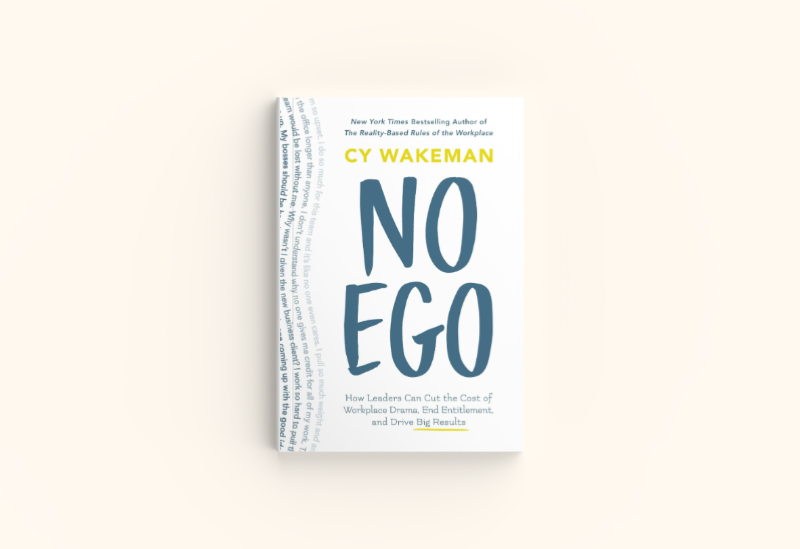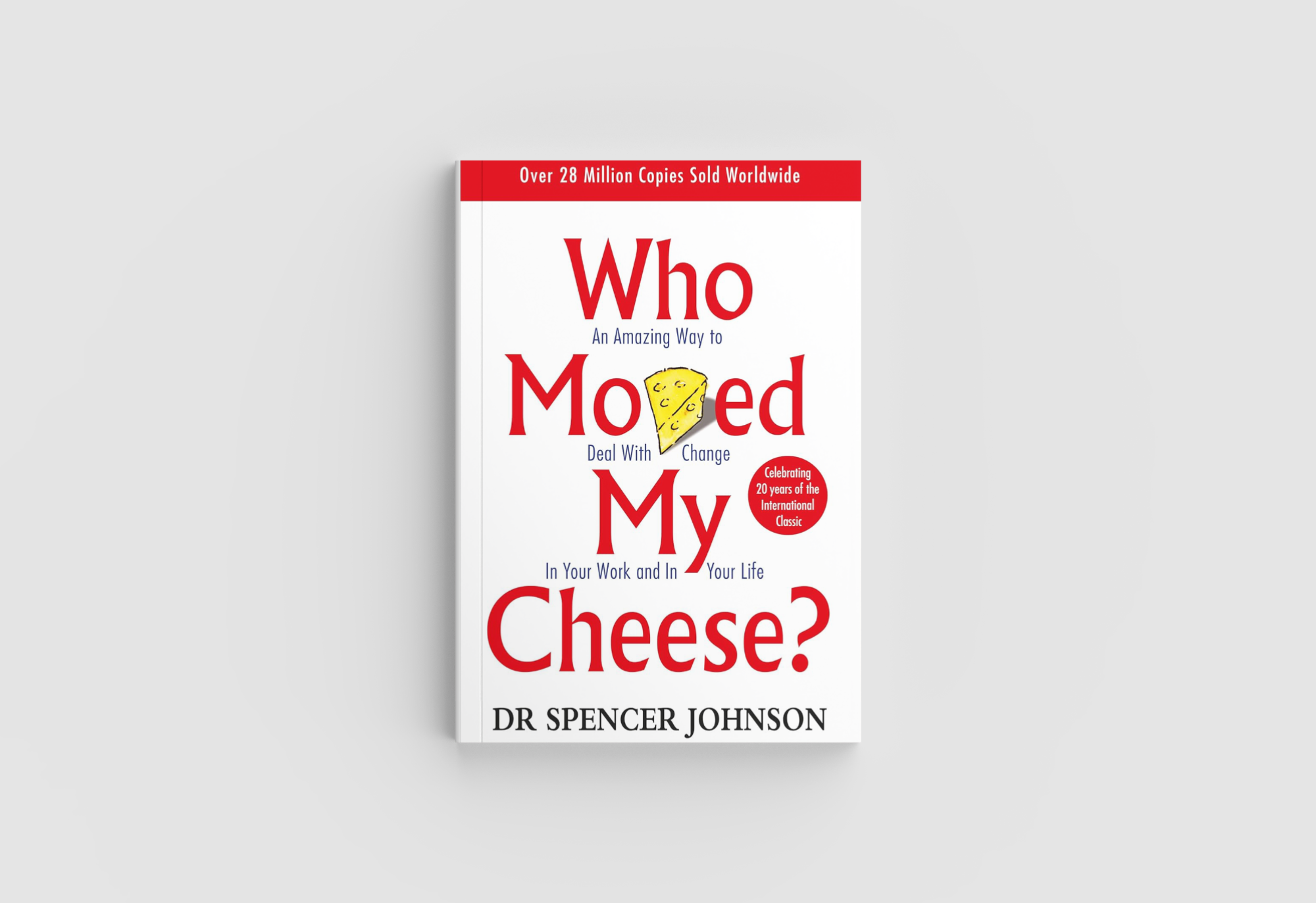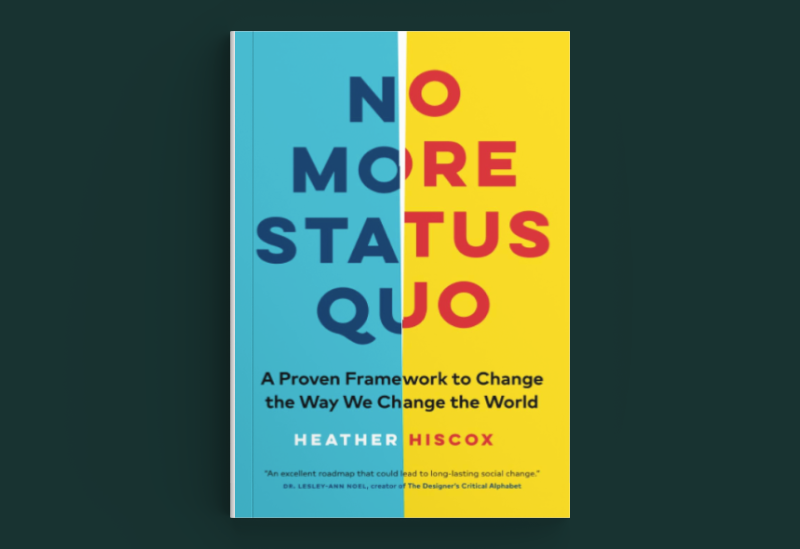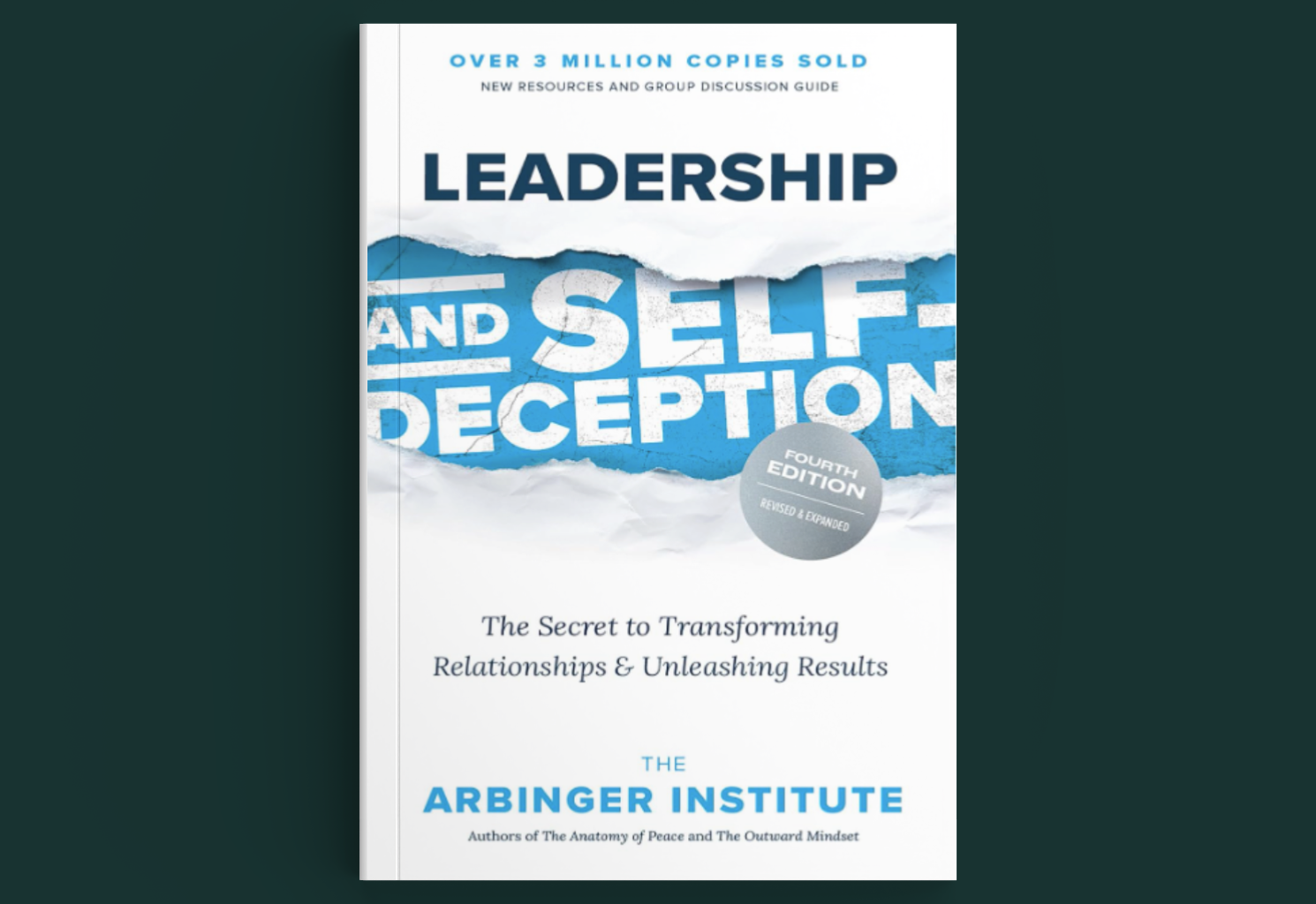BETTER IMPACT BOOK BITES: Who Moved My Cheese
This Month's SelectionWho Moved My Cheese, by Spencer Johnson, M.D.The seventeenth in a series of Better Impact Book BitesA taste of great books...

This Month's Selection:
No Ego – How Leaders Can Cut the Cost of Workplace/Drama, End Entitlement and Drive Big Results by Cy Wakeman
The twenty-third in a series of Better Impact Book Bites
A taste of great books worth consuming.
Change can be difficult, but it doesn’t have to be. From employees to volunteers, bringing people along for the ride can be a challenge, but this book helps to mitigate that. Using the Reality Based Leadership model, the author Cy Wakeman helps to dispel emotional waste exerted during change that can be a roadblock to creating happy and accountable people in the organization. She challenges the "open door policy” and makes the case that change isn’t difficult; what’s difficult is attachment to the past and the resistance to change. She shows how change is easy for those who are ready for it and offers several tools and tactics surrounding the key to change: accountability. This book is 164 pages and available as an audiobook.
The author sets the tone for the entire rest of the book with this simple phrase, “Shut the conventional door.” She challenges readers to rethink venting and open-door policies as data shows they are actually destructive to a company. Yeah, I know. Cold-water in-your-face hard-hitting reality right from the start, but it sets the foundation for something remarkable. Get ready to let go of previously held beliefs to help you elevate to the next level.
Chapter 1 shows the actual data behind drama in the workplace and how costly it can be for an organization. Leaders reported that 32% of drama they dealt with include hurt feelings, misinterpretation or speculation, employee hearsay or gossip, handling defensiveness or resistance to feedback and addressing person to person comparisons to name a few. This leads to emotional, and time waste in the workplace. The author describes what emotional waste is, how to identify it and the antidote to emotional waste accountability.
Buckle up buttercup because she gets real. My favorite quote in the whole book comes from this chapter; “Your ego is not your amigo.” However, reality is your friend. Ego and confidence are not the same thing, and the author does a brilliant job of describing the difference between the two. She discusses how venting is the ego’s way of avoiding self-reflection. Yikes. Why is this important? Self-reflection is critical to advancing in the workplace but often our ego prevents us from doing so. She also talks about the myth of employee (and/or volunteer for our purposes) engagement and why the assumption that engagement automatically equals better outcomes. Lastly in this chapter, she shares that truly effective leaders ask questions; they don’t tell people, they direct people. They facilitate great thinking through self-reflection as an ego-bypass, minimizing drama which creates environments of high productivity.
It has been said that “efficient processes translate to a healthier bottom line and a more successful company” and Cy signs off on this as well. This chapter takes it to another level though. Not only should your processes be intact, but there should be a SOP (standard operating procedure) if you will, on how to handle situations when mistakes are made. She offers questions and assignments for self-reflection as they are the antidote for workplace drama that keeps companies from being effective. It is a process that encourages accountability rather than judgment and fosters the attitude of UBUNTU (an ancient African word meaning 'humanity to others'); how can I be of help to the situation so that we all win instead of judging others.
In this chapter, the author sheds light on flawed logic that leads to our misconception of engagement. The one that hit me hardest was that every person’s vote counts the same. Ugh! I encourage you to hear her out. What she says makes sense, even though at first hearing it may sound a bit harsh. My second favorite quote from this book comes from this chapter: “Engagement without accountability creates entitlement.” Whew! I am going to leave that right there for now. Engagement is absolutely important, but how we have traditionally gone about it hasn’t really been working and she has the data to back it up.
This chapter provides a fresh perspective to the engagement challenge and how in actuality, accountability is really what increases engagement. She offers the suggestion of looking at our engagement surveys through a different lens. She really gets the reader to question why they do the surveys and how to look at the data gathered differently. She cautions us to be sure that whatever we do, engagement scores should be directly tied to accountability and improving business results because if they aren’t, it could be a tricky situation. For example, if the least-competent, least-change ready people are highly satisfied, it means we missed something. So how does one measure accountability exactly? Well, she offers ways to do just that. Lastly, one of the most powerful lessons I have learned as a leader is confirmed in this chapter, work with those who are willing. You will always have those who are resistant to change, but don’t worry about them for now. Work with those who are willing and those who are hesitant will either see the positive results and follow suit or leave. We can’t create the perfect workplace, but we can coach our staff on how to navigate the hurdles that do come up in the workplace.
Accountability has been mentioned several times throughout the previous chapters, but she dives a little deeper in this one. I love that she says, “reality is the most motivating force for accountability. Leaders who constantly sugarcoat difficult issues or attempt to bend or soften reality are enabling others and protecting the ego.” In this chapter she defines accountability (backed by research she did) introduces the four factors of accountability and the five phases of development when it comes to accountability (including feedback, which as you may know is one of my favorite things). Lastly, she shares that “today’s accountability drives tomorrow’s results” so investing in developing accountability as a team will reap greater payoffs than you could have ever imagined.
She does it again. “Change management needs to die.” Ouch. Not my words, hers! She breaks down the four myths of change management including change is hard and people need time to grieve change. As a former therapist, she has seen a lot of change and has had to help dozens of clients through change and offers this: Change is going to happen regardless. It is up to the person how they handle and embrace that change. They can either accept it, roll up their sleeves and move along with it, or erect a wall of resistance to that change. The choice is ours.
This is probably one of the most eye-opening chapters I have ever read in my life and I love that the author provides a different perspective to change. Change is only difficult for the unready. Business readiness “ensures that change isn’t disruptive to the business.” Ego can be resistant to change, but when leaders focus on what is best for the business rather than placating individuals, it can bypass the ego; especially because in the end, what is good for the business will be good for the staff. If the business is thriving and successful, it encourages security, engagement and happier staffers (my words and observations, not hers). Lastly, in this chapter she addresses the essential keys to business readiness such as transparency, awareness and advocacy.
The volunteer engagement leader’s favorite phrase Buy-In…because we are constantly having to vie for it. The opening words in this chapter sound like, in addition to her other roles, she may have been a volunteer engagement leader in her former life. Her words spoke to my soul!!! She attributes the leader having to get buy-in to a Mission Impossible movie because it relies on the person who needs to buy-in (our volunteers) to be open to change. Instead, she encourages leaders, again, to work with those who are willing to create great results. She shares that “people get clear on the fact that if they want to play on the team, buy-in is a prerequisite.” I don’t know about you, but I just tensed up a bit. Again, though hear her out. She is speaking from years of experience, research and data to back this up. She offers ways to go about it that aren’t tyrannical, but matter of fact and tangible.
The author wraps up by sharing that reality is rough and leadership is love. She also leaves sound advice for leaders, such as: check your own ego first, go slow and be gentle. “You want to wake people up, but not by violently shaking them up.”
This book isn’t for the faint of heart. If you are not ready for your ego to be poked and prodded and ready for self-reflection, don’t read it. I hope that you are willing though, because by the end of it, you will emerge a different, more productive, more promotion worthy, and valuable employee to the company. Additionally, I have seen an emerging theme; from Atomic Habits to Traction and now No Ego there is a clear message; effective processes lead to successful business, including processes for managing change. Get ready for a wild ride, but when it ends, chances are you will feel exhilarated and ready to take on change.
Featured Posts

This Month's SelectionWho Moved My Cheese, by Spencer Johnson, M.D.The seventeenth in a series of Better Impact Book BitesA taste of great books...

This Month's Selection:No More Status Quo – A Proven Framework to Change the Way We Change the World By Heather Hiscox The twenty-fifth in a series...

This Month's Selection: Leadership and Self-Deception:The Secret to Transforming Relationships and Unleashing ResultsBy The Arbinger Institute The...